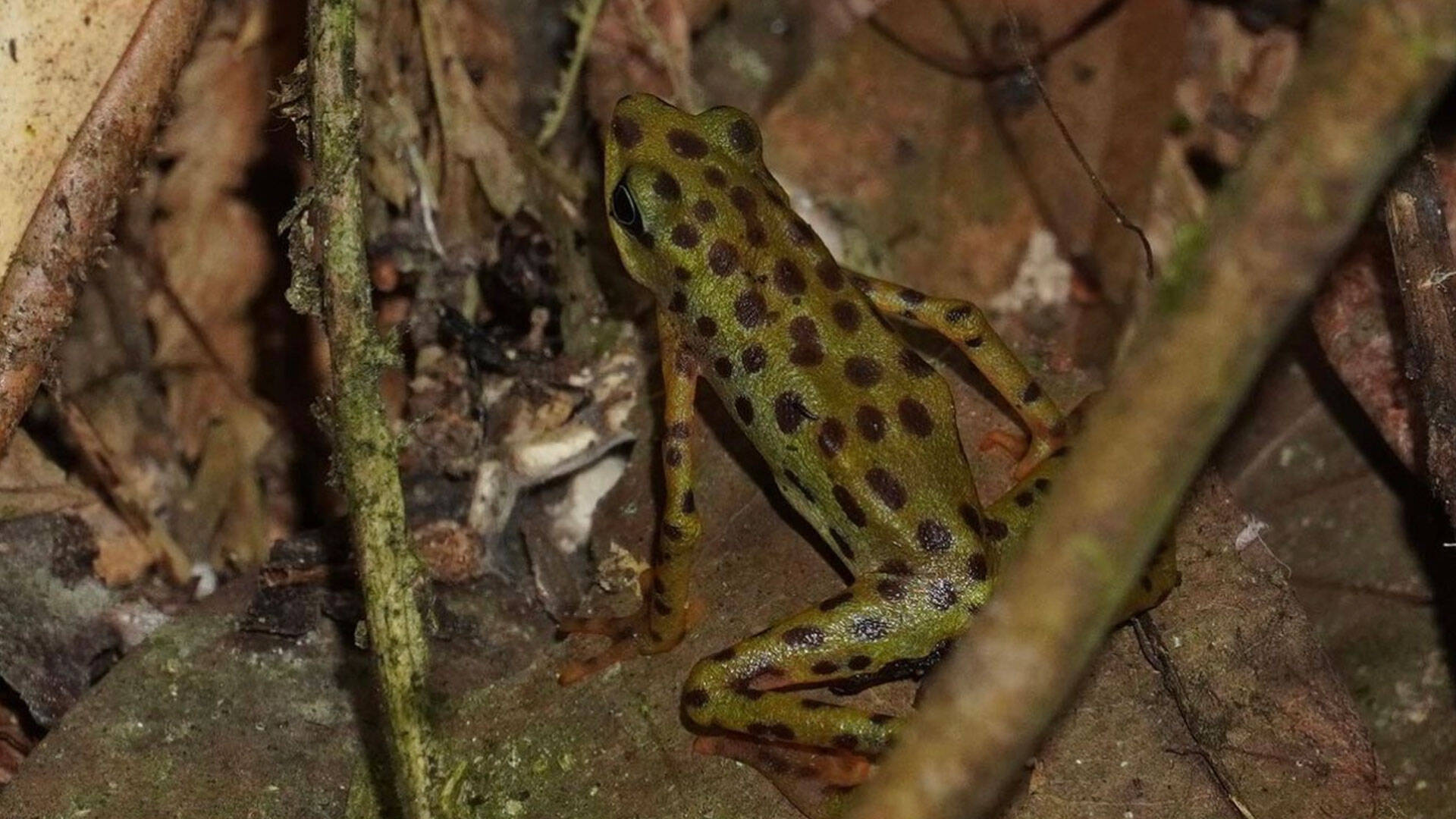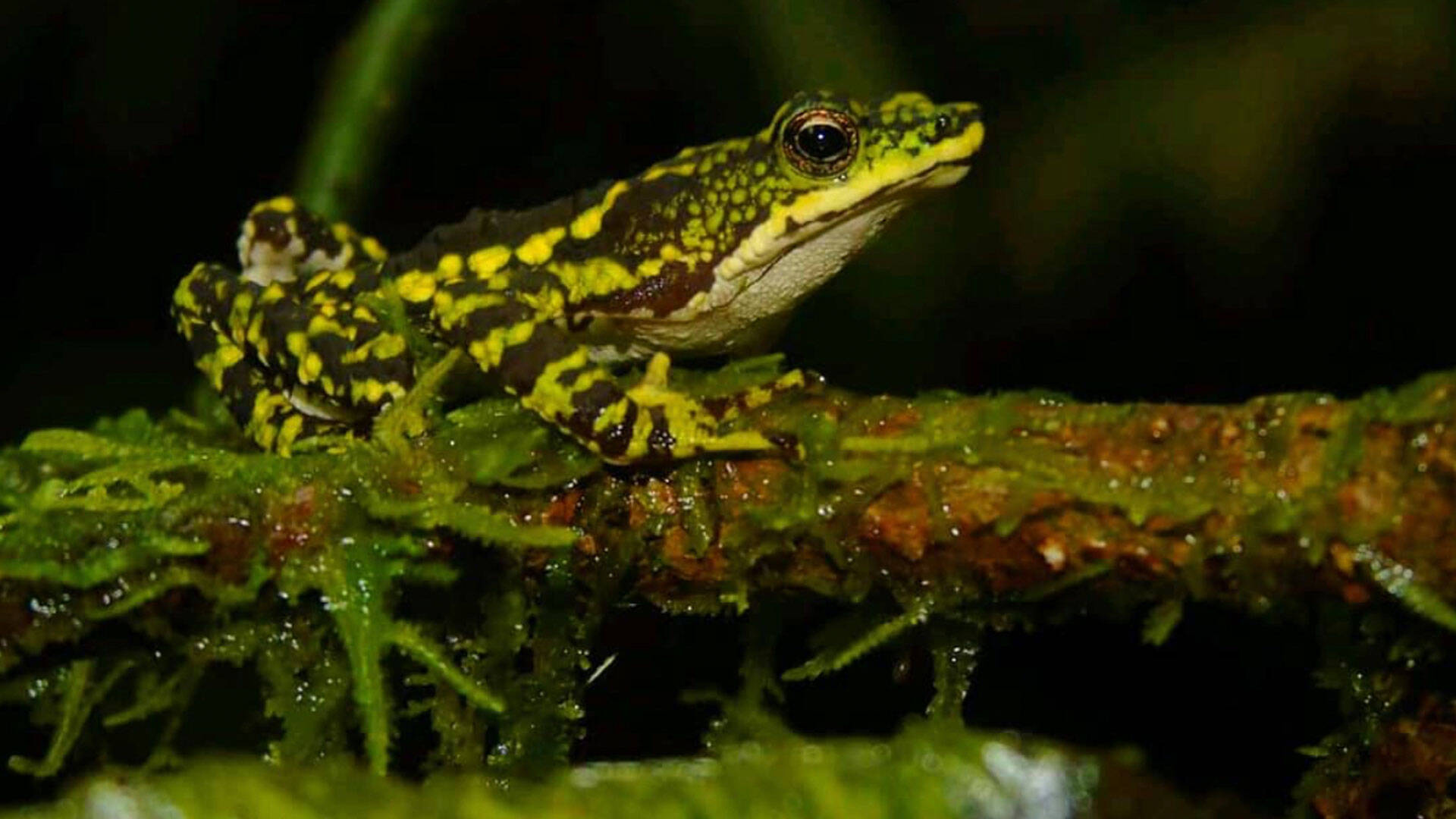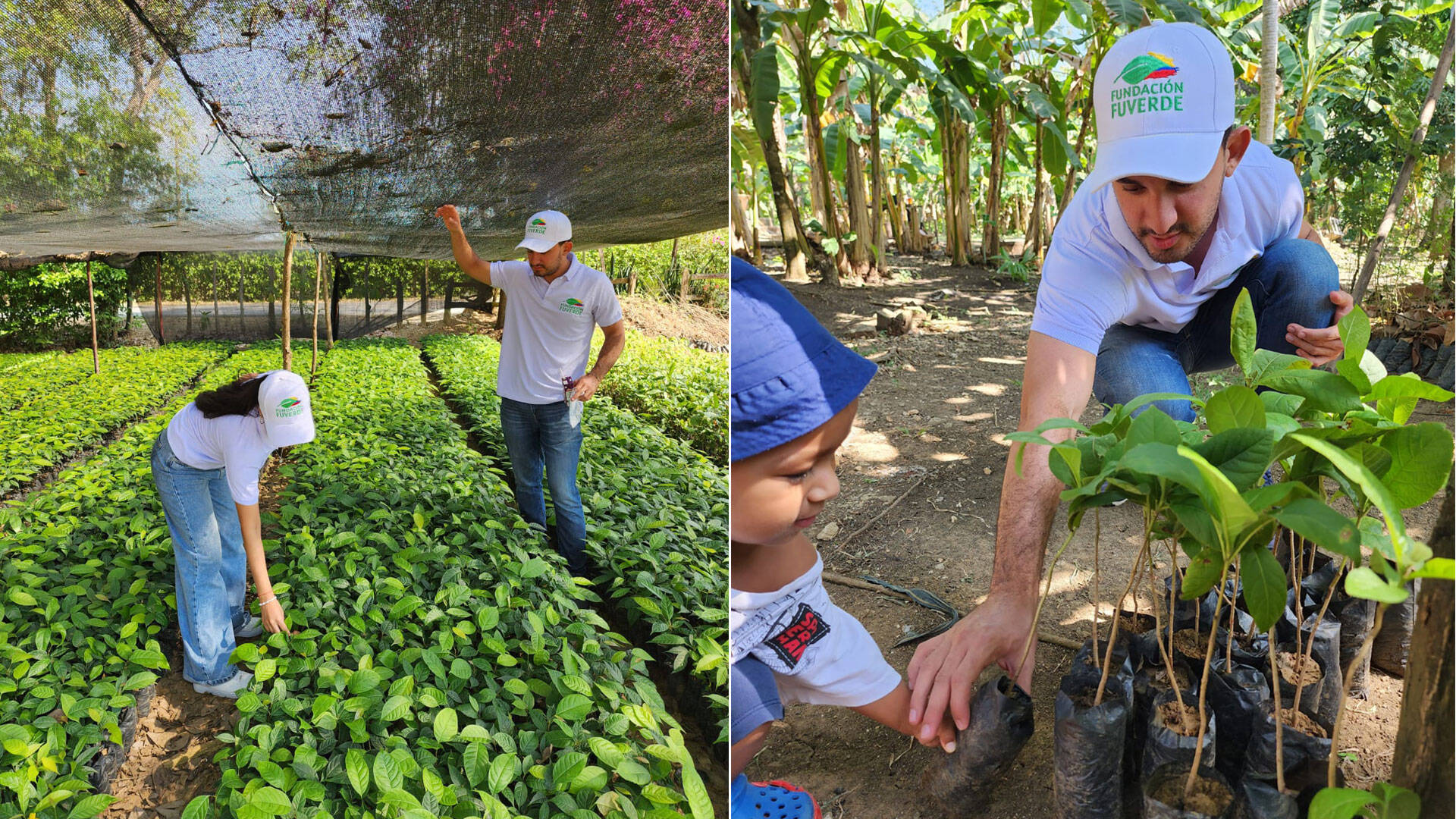For Amphibian Week 2023 we’re shining a light on Atelopus pastuso, the Amazon páramo frog. This tiny amphibian (adult females are 3-5cms long, while males are slightly smaller) is found in the Bordoncillo moorland, within the Colombian basin of the Amazon River. Unfortunately, this species is Critically Endangered (IUCN Red List) with an estimated population of less than 50 individuals.
Through our Conservation Fund small grants programme, we supported the Fuverde Foundation and their herpetologists with vital funding to help preserve this species in the wild. There are many threats to the survival of this species: loss of habitat from deforestation and illegal mining, the threat of disease (chytrid fungus), and climate change.






